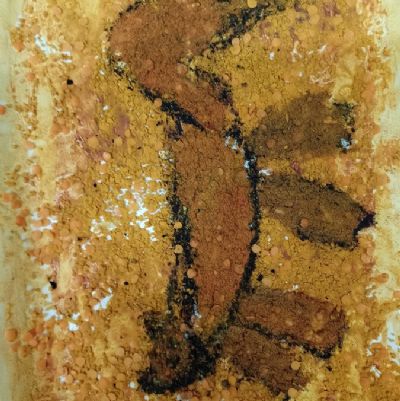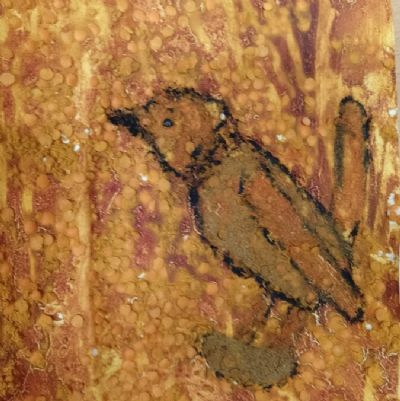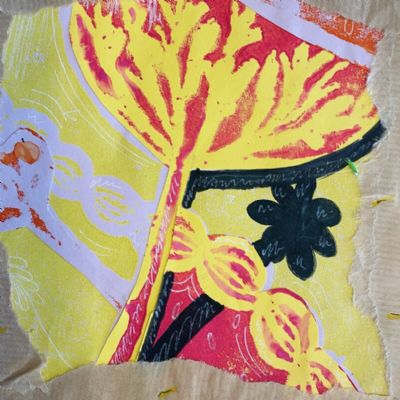Art
Our Vision for Art
At Castle Newnham School we value Art and Design as an important part of the curriculum to support the holistic development of our pupils. We aim to ensure all pupils produce creative, imaginative work whilst maintaining an environment where young people feel safe and encouraged to challenge pre- conceptions, take risks and show resilience. By teaching pupils to become visually literate we are arming them with transferable life skills. We aspire for every young person to develop a life-long love of learning, teaching them how to learn to become highly engaged and motivated learners.
Curriculum Intent
The intent of the Art and Design curriculum at Castle Newnham is to develop students who are passionate, enthusiastic, engaged and knowledgeable about Art and the creative industry.
Pupils are given the opportunity to engage with practitioners and are exposed to historical Art and Design from a range of cultural contexts. We provide learning contexts that promote understanding of the creative industries, their role in the economy and exciting career opportunities.
Our Art and Design staff are passionate about their subject and believe knowledge underpins and enables the application of skills. Pupils work with a broad range of materials, techniques and processes which spark curiosity, provide intrinsic motivation and pride in their work.
We believe our curriculum goes beyond what is examinable, offering pupils clubs and skills workshops to develop their artistic interests and talents. Inspiration is sought from current exhibitions, local landscapes, gallery visits and visiting artists. We intentionally scaffold our curriculum in such a way that pupils continually revisit skills and build upon them each year, tackling increasingly challenging concepts; this developing journey incorporates a deeper understanding of prior learning.
Our subject naturally lends itself to collaboration and the sharing of ideas, building the ‘cultural capital’ of our pupils through the exploration of the work of other artists from a vast spectrum of backgrounds, genders, ethnicities and beliefs.
Curriculum Implementation
Collaborative curriculum planning lies at the heart of what we do in the department with our pupil focused approach evident throughout the federation thanks to our primary arts specialist who also works within secondary Art and Design.
We implement our curriculum through teaching methods that promote an understanding of not only what, but why we are learning and how this learning might impact and enhance pupils’ overall learning experience at Castle Newnham School. As each step in a learning journey develops, it incorporates a deeper understanding of prior learning as well as more choice and freedom. At all key stages we take into account the particular interests of learners to enhance their experience of the subject and deepen their understanding and ability to apply key concepts and ideas to a multitude of everyday situations. SMSC (Spiritual, Moral, Social and Cultural) and British Values are embedded into the curriculum as we encourage pupils to reflect on experiences through visual, tactile and other sensory means.
Our pupils feel that the Art and Design curriculum is suitably challenging, enjoyable and that they know how to progress within the subject and feel supported by the department staff. The teachers in the art department have high expectations and this is reflected in the displays around the school which give pupils a sense of pride.
Special Educational Needs Disability (SEND) / Pupil Premium / Higher Attainers
All children will have Quality First Teaching. Any children with identified SEND or in receipt of pupil premium funding will have reasonable adjustments made that are additional to or different from their peers in order to support them to access the curriculum. All reasonable adjustments made are based around the individual and their needs.
As well as this, our school offers a demanding and varied curriculum, providing children with a range of opportunities in order for them to reach their full potential and consistently achieve highly from their starting points.
Year Group Content
Please see our long-term plan below, including curriculum objectives:
Reception
Art
Artist links - Toyin Ojih Odutola: Portraits, Kandinsky : Shapes
- begin to colour mix using tools
- to use different textures and materials to create artwork
- To draw a self-portrait (enclosing lines): draw definite features
Artist links - Van Gogh: The Potato Pickers. The Olive Pickers
- Explore how colour can be changed
- recognise and recreate pattern
- painting with watercolours
Artists links - Monet: Water Lilies , Cheeming Boey: Animals , Utagawa Hiroshige, Emily Carr Landscapes
- create work in the style of famous artists
- explain what has been created and the process used
We use KAPOW to enhance our continuous provision.
Please see our Primary long-term plan at the bottom of this page.
Year 1
Art
Drawing: Make your mark
Artist links – Bridget Riley, Wassaly Kadinsky, Zarla, Forman Renata, Bernal Ilya, Botowsky
- To know how to create different types of lines.
- To explore line and mark making to make water.
- To draw with different media.
- To develop and understanding of mark making using different tools .
- To apply and understanding of drawing materials and mark making to draw from observation.
Painting and mixed media
Artist links – Jasper Johns, Clarice Cliff, Wassaly Kadinsky
- Investigate how to mix secondary colours.
- To apply knowledge of colour mixing when painting and to explore colour when printing.
- To experiment with painting and mixing to make a range of secondary colours.
- To apply painting skill when working in the style of an artist.
Sculpture and 3D: Paper play
Artist links – Louise Bourgeois
- To roll paper to make 3D structures.
- To shape paper to make a 3D drawing.
- To apply paper shaping skills to make an imaginative sculpture.
- To work collaboratively to create and sculpture.
Please see our Primary long-term plan at the bottom of this page.
Year 2
Art
Craft and design: map it out.
Artist links – Susan Stockwell
- To investigate maps as a stimulus for drawing.
- To learn and apply the steps of the felt making process.
- To experiment with a craft technique to develop an idea.
- To develop ideas and apply craft skills when printmaking.
- To present artwork and evaluate it against a design brief.
Sculpture and 3D: Clay houses
Artist links – Rachel Whiteread
- To use my hands as a tool to shape clay.
- To shape a pinch pot and join clay shapes as decoration.
- To use impressing and joining techniques to decorate a clay tile.
- To use drawing to plan the features of a 3D model.
- To make a 3D clay tile from a drawn design
Tell a story
Artist links – Quentin Blake
- To develop a range of mark making techniques.
- To explore and experiment with mark-making to creature textures.
- To develop observational drawing.
- To understand how to apply expressions to illustrate a character.
- To develop illustrations to tell a story.
Please see our Primary long-term plan at the bottom of this page.
Year 3
Art
Painting and mixed media
Artist links – Pablo Picasso
- To apply understanding of prehistoric man made art.
- To understand scale to enlarge drawings in a different medium.
- To explore how natural products produce pigments to make different colours.
- To select and apply a range of painting techniques.
- To apply painting skills when creating collaborative artwork.
Growing artists
Artist links – Katsushika Hokusai
- To recognise how artists use shape in drawing.
- To understand how to create tone in drawing by shading.
- To understand how texture can be created and used to make art.
- To apply observational drawing skills to create detailed studies.
- To apply an understanding of composition to create abstract drawings.
Sculpture and 3D: Pinch Pots
Artist links – Anna Whitehouse and Kirsteen Holuj
- To create a drawn design for a pinch pot using work from the Shang Dynasty and then “Our Local Area” as inspiration.
- To use my hands as a tool to shape clay.
- To create a sphere and use thumbs to create a pinch pot.
- To use impression techniques to apply a design to the pots.
- To use joining techniques to enhance clay pots inspired by the local area.
Please see our Primary long-term plan at the bottom of this page.
Year 4
Art
Painting and Mixed Media – light and dark
Artist links – Frank Stella
- To investigate different ways of applying paint. To mix tints and shades of colour.
- To use tints and shades to give a 3 dimensional effect when painting.
- To explore how paint can create very different effects.
- To consider proportion and composition when planning a still-life painting.
- To apply knowledge of colour mixing and painting techniques to create a finished piece.
Drawing – Power Prints
Artist Links - Georges Seurat, Ed Ruscha,Fernando Botero, Henry Moore
- To draw using tone to create a 3D effect.
- To explore proportion and tone when drawing.
- To plan a composition for a mixed-media drawing.
- To use shading techniques to create patterns and contrast.
- To work collaboratively to develop drawings into prints.
Sculpture and 3D: Mega Materials
Artist links – Magdalene Odundo, Barbara Hepworth, Juame Plensa, Sokari Douglas Camp, El Anatsui
- To develop ideas for 3D work through drawing and visualisation in 2D.
- To use more complex techniques to shape materials.
- To explore how shapes can be formed and joined in wire.
- To consider the effect of how sculpture is displayed.
- To choose and join a variety of materials to make sculpture.
Please see our Primary long-term plan at the bottom of this page.
Year 5
Art
All about me boxes
- Decoupage personalised shoebox lid
- Plan content, select and source images
- Pencil crayon Illustrations to include
- Layout and collage
- Written work evaluation
Links with personal development
Plants and flowers
Artist links – Georgia O’Keeffe
- Illustration, keywords and wax crayon and graphite leaf rubbings for topic title page, annotating.
- Still life, observational sketching of plants
- Evaluating sketching
- Confidence with colour theory (moving on from basic colour wheels)
- Developing proficiency using water colour, mixing leafy colours.
- Expand creativity with a mixed media and pattern leaf.
- Art history, learning about the life and work of Georgia O'keefe, artist copy using pencil crayon
- Composition using a viewfinder, enlarging to create a watercolour painting in the the style of Georgia O’keeffe
- Wet on wet, wet on dry and graded wash watercolour painting methods.
- Skills and artist knowledge recap
- Design and make ceramic clay flower tile, 3D sculpting
- Ceramic glazes
Harpur Trust annual school Art competition
Artist links – Visiting artist workshop
- Planning, and completing an entry based on the skills demonstrated in a visiting artist workshop.
- Evaluating work
Competition theme to be announced. Any winning entries exhibited at the Higgins museum (skills to be developed once theme shared)
Dare to stare
Artist links – Escher
- Source eye images, layout, illustration and add adjective keywords topic title page
- Look at Escher eye drawings
- Tone, tonal bar, intro to using B pencils
- Tonal drawing of an eye using B Pencils
- Line drawing methods (hatching, cross hatching stippling)
- Line drawing of an eye using fineliner pen
- Collage of an eye
- Annotating work, knowledge recap
Developing drawing skills, using tone and B pencils, collage
Cubism
Artist links – Picasso
- What is cubism?
- Copy of a picasso painting in oil pastel
- Continuous line drawings of a face. Pencil and pencil crayon
- Cubist mixed media self portrait collage
- Cubist style self portrait in ready mix paint
- Annotating work, cubist and artist knowledge recap
Developing drawing skills, artist knowledge, using oil pastel and ready mix paint
Please see our Primary long-term plan at the bottom of this page.
Year 6
Art
Day of the Dead
Artist links – Jose Posada
- Origins of the Day of the Dead festival, aztecs, use and meaning of symbols
- Create own Calavera design using felt tip or colouring pencil
- Tonal bar using B pencils
- Tonal and line drawing of a skull using B pencils and intro to the grid method
- Layout and annotate topic title page with recent work
- Oil Pastel decorative calavera monoprinting
- Chalk and graphite skull drawing
- Design and make ceramic clay skulls using slab method and 3D sculpting.
- Using ceramic glazes
- Written evaluation
Developing drawing skills, using tone and B pencils, chalk and graphite, 3D ceramic modelling and painting
Optical (OP) Art
Artist links – Bridget Riley
- What is OP Art, intro to bridget Riley and video
- Decorate OP ART title with optical illusion and patterns using black fineliner
- Title page, layout, annotate and add paper collage and felt tip optical effects..
- OP Art letter design 2023 calendar in ready mix paint.
- Draw OP art hand using felt tip or pencil crayon
- Design an OP Art cube net collaborative work coloured with felt tip
Developing design skills, layout, collage, refining precision colouring and painting skills.
Harpur Trust annual school Art competition
Artist links – Visiting artist workshop
- Planning, and completing an entry based on the skills demonstrated in a visiting artist workshop.
- Evaluating work
Competition theme to be announced. Any winning entries exhibited at the Higgins museum (skills to be developed once theme shared)
Water
Artist links – Hokusai and Claude Monet
- Mixed media
- Artist profile: Claude Money (Waterlillies)
- Mixed media mark making activity, Monet style (pastel, watercolour, brusho dye, wax resist)
- Hokusai, the Great Wave copy in wax resist
- and watercolour
- Tonal drawing of a fish with B pencils, mixed media and collage
- Batik fish
- Written evaluation
Mixed media mark making skills, tonal drawing, wax resist painting, intro to Batik.
Please see our Primary long-term plan at the bottom of this page.
Year 7
In year 7 pupils’ learning at KS2 is built upon and developed through experimenting with a range of media, techniques and processes such as pencil drawing, watercolour and printing. Pupils are introduced to a variety of artists such as Gail Brodholt, Angie Lewin and Corey Barksdale. Key skills are reinforced and developed such as colour theory across media and using grids for accuracy. Pupils are also introduced to the vast creative industry through research and discussion.
- Fabric of Bedford
- Insects and Natural Forms
- People in Action
Year 8
By year 8 pupils have a solid foundation of skills and demonstrate an understanding of a range of media which will continue to develop through this year. Pupils will revisit and use prior learning to progress their understanding of the subject. Pupils will explore important art movements Surrealism and Pop Art, understanding the influence of these on society. New media, techniques and processes will also be investigated; ceramics and graphic collage for example. Investigating artists such as Dali, Michael Craig Martin and Warhol will add to pupil knowledge of Art History. At this time, pupils can choose to study Art as an option in year 9.
- Transport
- Ordinary/Extraordinary
- Pop Art
Year 9
This is the last year some of our pupils will study Art and also be the basis for many of our pupils who will take art for GCSE. As ever in addition to learning new skills, techniques and processes, prior learning is further applied and developed.
Pupils who have chosen to study Art as an option in Year 9 will be exposed to more mature and exciting media and techniques such as Batik and Mixed Media. Pupils in the option group will also delve into Art History, researching art movements, relevant and exciting artists and build work around historical techniques such as cave painting and impasto.
Those pupils who have not chosen Art as an option this year will still benefit from one term of Art. During this term, pupils will build upon prior learning and skills through investigation of artists such as Sarah Graham and Warhol.
Option:
- Marine Life
- History of Art
Rotation:
- Food/Pop Art
KS4 Fine Art
We follow the AQA specification which includes a broad range of skills, techniques, processes and expectations. Our focus is on ensuring pupils apply and develop their existing skills and understanding of techniques and processes.
Pupils begin working on the theme ‘Reflections’ in Year 10, from September to April; investigating a range of media, techniques and processes such as painting, printing, photography and mixed media. Pupils will investigate a range of artists to broaden their art knowledge and inform their practice. A personal response for this portfolio will be completed for April.
In April of Year 10 pupils will begin their second portfolio ‘Cultures’ which they will continue until December of Year 11. Pupils will further develop their skills using a range of media, techniques and processes informed by their investigation of relevant artists. The ‘personal response’ will be complete in December.
Pupils will be given their externally set exam topics from AQA in January of Year 11. Following this, pupils will build a relevant portfolio of work culminating in a ‘personal response’ produced in a ten-hour exam period.
Year 10
Portfolio 1 – Reflections
Portfolio 2 – Cultures
Year 11
Portfolio 2 continues – Cultures
Exam Portfolio – Theme choice supplied by AQA.
Our Art Gallery
Primary ART Gallery
Secondary ART Gallery





































.jpg)







.jpg)